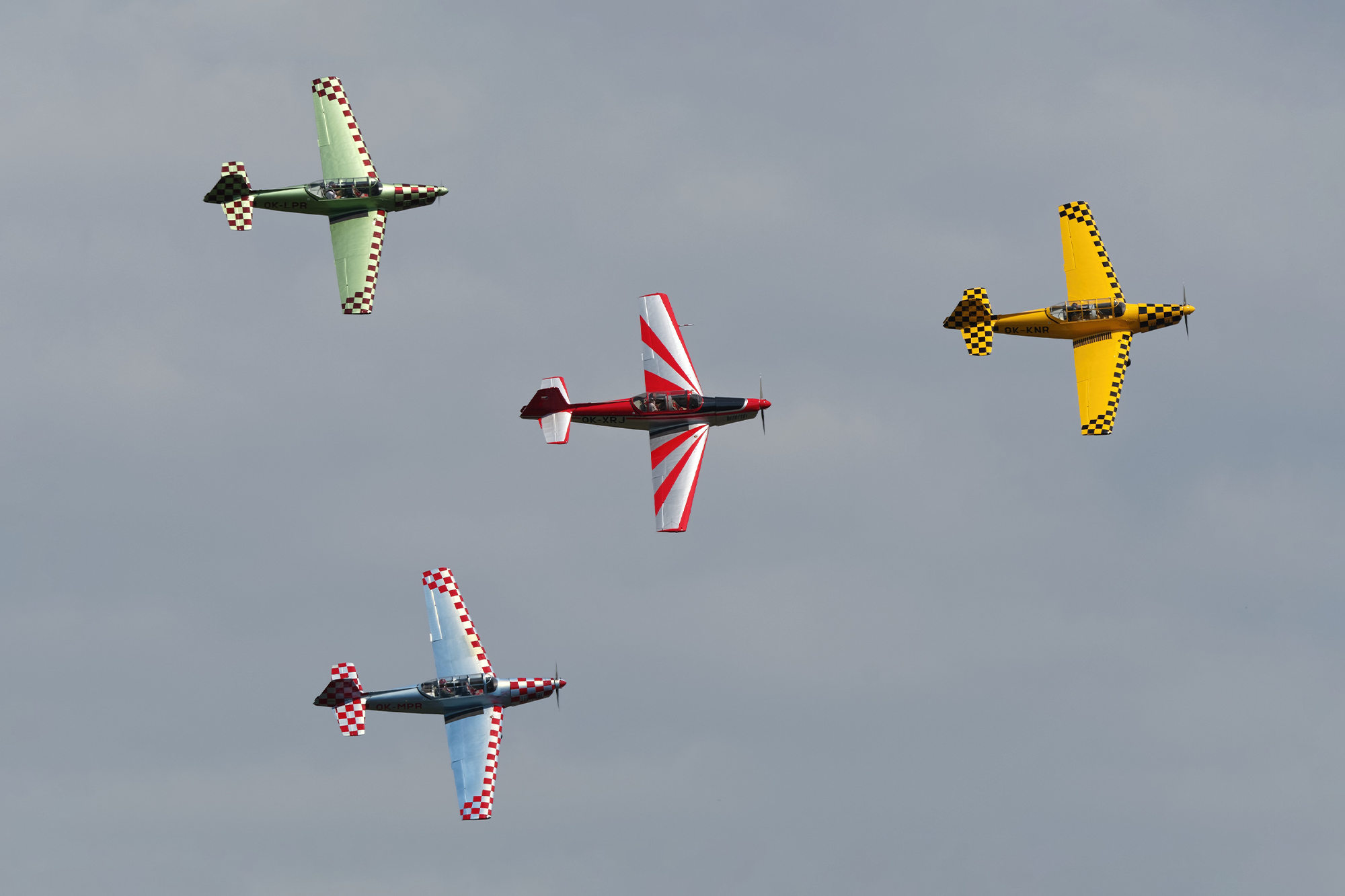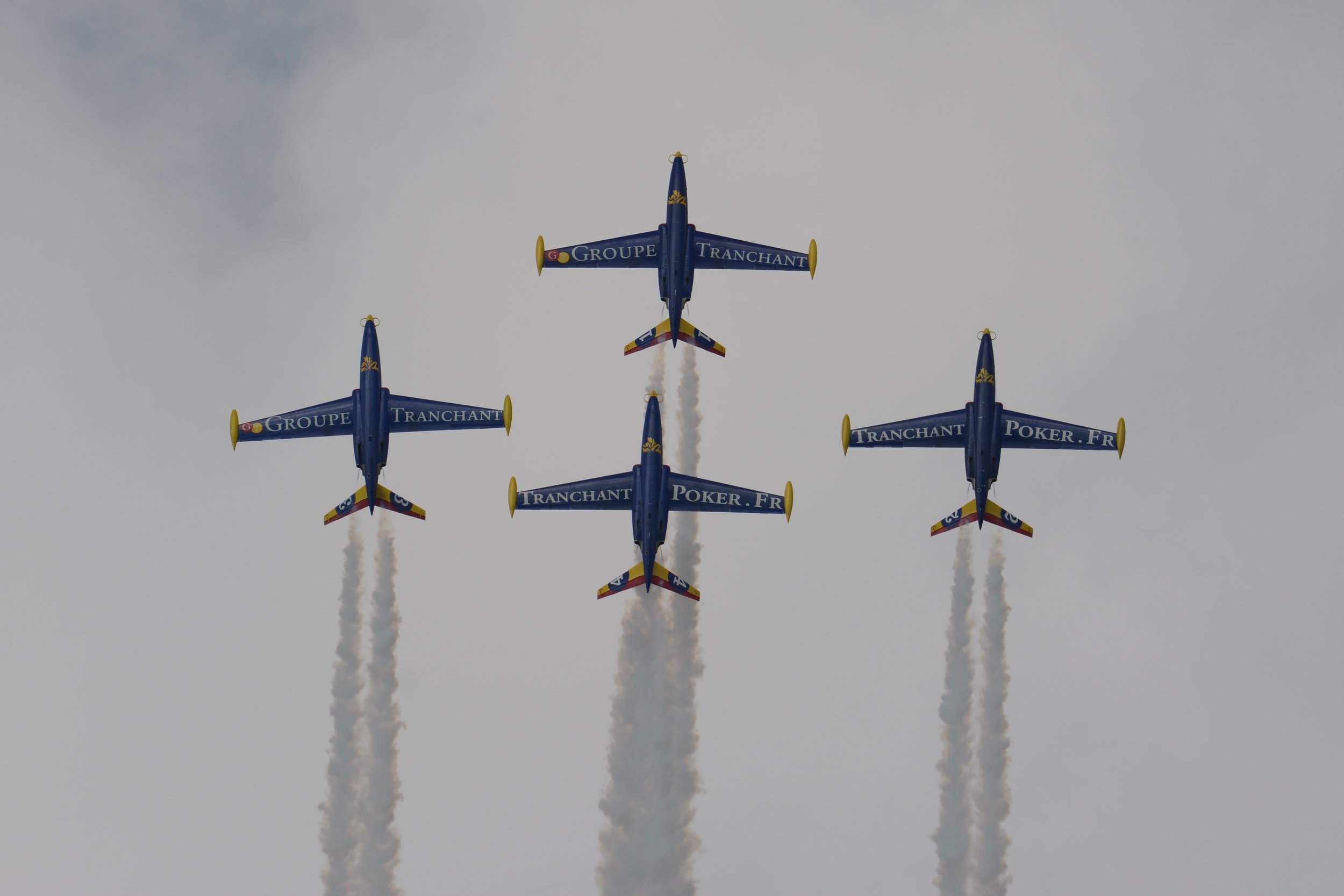Ocovski Bacovia
Country
Slovakia
Size
4 Aircraft
Base
Dobra Niva Airport
The Ocovski Bacovia is a renowned aerobatic team hailing from Slovakia, established back in 1981. With a fleet of four Czechoslovakian L-13 and L-23 gliders, they hold the title of being the world's largest glider aerobatic team. Delighting spectators annually, they grace numerous air shows not only in Slovakia but also across Europe. Their excellence was duly recognized in 1999 when they received the prestigious "Le Diplôme d'honneur" from the World Air Sports Federation for their exceptional contributions to group flying. The team draws its name from the charming village of Ocova nestled in the picturesque foothills of the Low Tatras mountains in central Slovakia, just a short drive away from the bustling regional centre of Zvolen. Operating from their new airport at Dobra Niva, located approximately equidistant from Zvolen in the south, the team comprises four skilled pilots and one adept co-pilot serving as the navigator. Each pilot is duly licensed as an instructor and for aerobatics, ensuring a seamless and impressive performance. Their captivating aerial displays unfold over a span of around 8 minutes, commencing at 3,300 feet with synchronized manoeuvres in various formations and brief solo exhibitions, all set to a captivating musical backdrop. To enhance the visual spectacle, each glider is outfitted with vibrant wingtip smoke generators as they transition between speeds of 90 km/h to 250 km/h throughout their captivating demonstrations.
| Back to Top |
LET L-13 Blanik
The L-13 Blaník is a two-seater trainer glider produced by Let Kunovice since 1956. It is the most numerous and widely used glider in the world. In the United States Air Force Academy service, it is designated TG-10C and was used for basic flight training up to 2012. The fuselage is of semi-monocoque construction employing longerons and bulkheads, with an ovoid cross-section. The cockpit is covered with a two-part acrylic glass canopy. Trapezoidal single-taper wings with forwarding (negative) sweep, single-spar, all-metal construction. Metal ‘salmon’ tips. Flaps and ailerons have a metal frame and are covered in fabric. Metal DFS type spoilers on the upper and lower wing surfaces. The horizontal tail surfaces fold up parallel to the fin for transportation and storage. The elevator and rudder are metal frames covered in fabric. The main single-wheel landing gear is sprung with an oleo-pneumatic shock absorber. When retracted, it still protrudes enough outside so there is little or no damage even if the wheel is accidentally left in the raised position for landing.
| Back to Top |
LET L-23 Super Blanik
The LET L-23 Super Blaník is a two-seat, all-metal structure glider with fabric-covered control surfaces. The aircraft is primarily used for flight training; its single-seat sister model is the Let L-33 Solo.
The Super Blaník is an improved version of the original LET L-13 Blanik. The cockpit is somewhat roomier in the L-23, and some differences are a swept fin and a T-tail, and on the L-23 flaps were deleted to save weight since they were rarely used on the LET L-13. The airbrakes were retained, however, and these open on both the top and the bottom of each wing. LET also moved the tailplane to the top of the vertical stabilizer for better protection in case of an outlanding. It also has a new instrument suite.
The aircraft has a two-piece canopy, where the front part opens to the right, and the rear part opens upwards and to the rear. This was done to improve vision compared to the L-13. From serial No. 968401 it was delivered with a one-piece canopy, that opens to the right only (with a very small canopy section opening to the rear at the wing root). The maximum number of occupants is two. If it is to be flown solo, the pilot must be sitting in the front seat and his weight (including parachute and ballast) must be at least 70 kg (154 lb). If the pilot's weight is less than 70 kg (154 lb), it is necessary to use ballast to bring the total weight in the front to at least 70 kg (154 lb). A weighted cushion weighing 15 kg (33 lb) is available to replace the soft seat cushion bottom in the front seat.
The United States Air Force Auxiliary Civil Air Patrol uses the L-23 as a trainer for cadets.
Blanik Aircraft CZ s.r.o. plans a new version of the L-23, the L23NG (New Generation), with winglets and slightly higher performance (L/D ratio: 31). It will have an improved fuselage and one-piece canopy
| Back to Top |








| Back to Top |

































